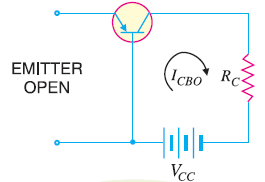
Thus we can say that the large collector current is obtained by varying the base region. The few electrons of the emitter are combined with the hole of the base region and the remaining electrons are moved towards the collector region and constitute the collector current. The base of the transistor is very thin and lightly doped because of which it has less number of electrons as compared to the emitter. The base current causes the electrons to move into the collector region or create a hole in the base region. The magnitude of the base current is very small. The emitter-base section kept in forward biased constitutes the base current which flows through the base region. Usually, silicon is used for making the transistor because of their high voltage rating, greater current and less temperature sensitivity. The base of the transistor is lightly doped and very thin due to which it offers the majority charge carrier to the base. The collector-base junction is in reverse bias and offers the higher resistance to the circuit. The emitter-base circuit is in forward biased and offered the low resistance to the circuit. The base forms two circuits, the input circuit with the emitter and the output circuit with the collector. The collector section of the transistor is moderately doped, but larger in size so that it can collect most of the charge carrier supplied by the emitter.īase – The middle section of the transistor is known as the base. Its main function is to remove the majority charges from its junction with the base. The collector-base junction is always in reverse bias. The emitter-base junction injects a large amount of majority charge carrier into the base because it is heavily doped and moderate in size.Ĭollector – The section which collects the major portion of the majority charge carrier supplied by the emitter is called a collector. The emitter is alway connected in forward biased with respect to the base so that it supplies the majority charge carrier to the base. The terminals of the diode are explained below in details.Įmitter – The section that supplies the large section of majority charge carrier is called emitter. The transistor has three terminals namely, emitter, collector and base. The only difference between the NPN and PNP transistor is in the direction of the current. The arrow in the symbol indicates the direction of flow of conventional current in the emitter with forward biasing applied to the emitter-base junction. The symbol of NPN and PNP is shown in the figure below. Similarly, if the material has one layer of N-type material and two layers of P-type material then it is called PNP transistor. The transistor which has two blocks of n-type semiconductor material and one block of P-type semiconductor material is known as NPN transistor.

There are two types of transistor, namely NPN transistor and PNP transistor.

The emitter based junction of the transistor is connected to forward biased and the collector-base junction is connected in reverse bias which offers a high resistance. These names are given as per the common terminal of the transistor. The right part of the diode is called emitter diode and the left part is called collector-base diode. The base is the middle section which is made up of thin layers. It has three terminals namely emitter, base and collector. The transistor consists two PN diode connected back to back.


 0 kommentar(er)
0 kommentar(er)
